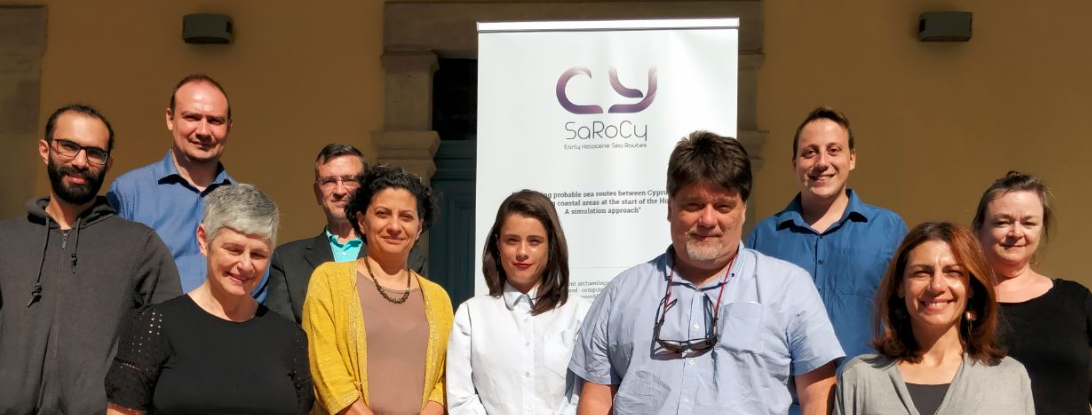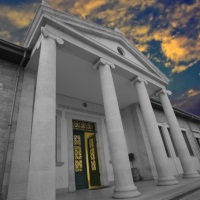
The Cyprus University of Technology (CUT) announces the successful organization of the kick-off meeting of project SaRoCy: “Delineating Probable Sea Routes between Cyprus and its surrounding Coastal Areas at the Start of the Holocene: A Simulation Approach”, that took place on Monday, November 4th, 2019, at CUT’s premises in Limassol. SaRoCy is a 2-year research project implemented within the context of the “Excellence Hubs” Programme (contract number EXCELLENCE/0198/0143) of the RESTART 2016-2020 Programmes for Research, Technological Development and Innovation administered by the Research and Innovation Foundation of Cyprus (RIF). The project’s consortium consists of the Department of Civil Engineering and Geomatics of CUT, the Archaeological Research Unit of the University of Cyprus, the Geological Survey Department of Cyprus, the Steinhardt Museum of Natural History of Tel Aviv University, Israel, and is coordinated by CUT’s Professor Phaedon Kyriakidis. The SaRoCy project proposal was ranked 2nd out of 65 proposals submitted to the “Social Sciences and Humanities” scientific area of RIF’s call for proposals “EXCELLENCE/0918”.
Capitalising on relatively recent archaeological findings, physical modelling, palaeogeographic reconstruction, and computer simulation, project SaRoCy seeks to provide novel insights into the possible prehistoric maritime pathways between Cyprus and other Eastern Mediterranean coastal regions at the onset of the Holocene (circa 12,000 years before present), a critical period for understanding the origins of early visitors to Cyprus in connection with the spread of Neolithic cultures. To accomplish its objectives, project SaRoCy links experts in archaeology, geology, oceanography, physics, marine civil engineering, geospatial analytics and geocomputation, towards a Cyprus-based, “excellence hub” on modelling prehistoric maritime connectivity/mobility in the Eastern Mediterranean. Project SaRoCy responds to the cutting-edge, frontier research requirement of the Programme “Excellence Hubs” by seeking to create new knowledge on a topic that has recently attracted global attention within the broader context of island and maritime archaeology.
Project SaRoCy is expected to: (i) make a hallmark on archaeological science, and in particular on the archaeology of the prehistoric Eastern Mediterranean, (ii) strengthen the academic and scientific background of its consortium partners, and of European research, while increasing the attractiveness of Cyprus as a key research destination, and (iii) create a unique niche in Cyprus and in the Eastern Mediterranean, serving as the springboard for expanding similar research in the future to other parts of the Mediterranean.
More information can be found at the project’s website: https://sarocy.cut.ac.cy
Εκδήλωση εορτασμού των 10 χρόνων λειτουργίας της Βιβλιοθήκης «Βασίλης Μιχαηλίδης»

The Cyprus University of Technology (CUT) announces the successful organization of the kick-off meeting of project SaRoCy: “Delineating Probable Sea Routes between Cyprus and its surrounding Coastal Areas at the Start of the Holocene: A Simulation Approach”, that took place on Monday, November 4th, 2019, at CUT’s premises in Limassol. SaRoCy is a 2-year research project implemented within the context of the “Excellence Hubs” Programme (contract number EXCELLENCE/0198/0143) of the RESTART 2016-2020 Programmes for Research, Technological Development and Innovation administered by the Research and Innovation Foundation of Cyprus (RIF). The project’s consortium consists of the Department of Civil Engineering and Geomatics of CUT, the Archaeological Research Unit of the University of Cyprus, the Geological Survey Department of Cyprus, the Steinhardt Museum of Natural History of Tel Aviv University, Israel, and is coordinated by CUT’s Professor Phaedon Kyriakidis. The SaRoCy project proposal was ranked 2nd out of 65 proposals submitted to the “Social Sciences and Humanities” scientific area of RIF’s call for proposals “EXCELLENCE/0918”.
Capitalising on relatively recent archaeological findings, physical modelling, palaeogeographic reconstruction, and computer simulation, project SaRoCy seeks to provide novel insights into the possible prehistoric maritime pathways between Cyprus and other Eastern Mediterranean coastal regions at the onset of the Holocene (circa 12,000 years before present), a critical period for understanding the origins of early visitors to Cyprus in connection with the spread of Neolithic cultures. To accomplish its objectives, project SaRoCy links experts in archaeology, geology, oceanography, physics, marine civil engineering, geospatial analytics and geocomputation, towards a Cyprus-based, “excellence hub” on modelling prehistoric maritime connectivity/mobility in the Eastern Mediterranean. Project SaRoCy responds to the cutting-edge, frontier research requirement of the Programme “Excellence Hubs” by seeking to create new knowledge on a topic that has recently attracted global attention within the broader context of island and maritime archaeology.
Project SaRoCy is expected to: (i) make a hallmark on archaeological science, and in particular on the archaeology of the prehistoric Eastern Mediterranean, (ii) strengthen the academic and scientific background of its consortium partners, and of European research, while increasing the attractiveness of Cyprus as a key research destination, and (iii) create a unique niche in Cyprus and in the Eastern Mediterranean, serving as the springboard for expanding similar research in the future to other parts of the Mediterranean.
More information can be found at the project’s website: https://sarocy.cut.ac.cy


